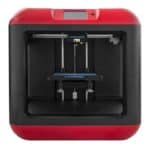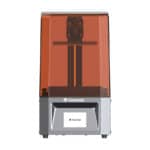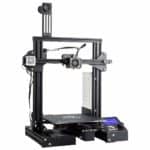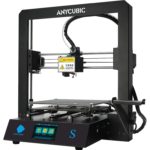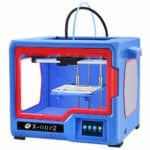Best Beginner 3D Printer in 2022

With more and more people getting into tinkering and making things in their own homes, 3D printers are seeing a bit of a boom. A quick look at Amazon though and it’s easy to be flabbergasted by the wealth of choice out there, so we have sat down and picked the five best beginner 3D printers on the market this year whether you are looking to get into filament or resin printing there really is something for everybody out there right now.
There’s plenty of amazing choices so let’s go looking, but if you are looking to spend a little more you should also take a look at our Best 3D Printers for under $500 too.
Products at a Glance
Best Beginner 3D Printer in 2022
- Ideal for beginners and easy to use
- Removable build plate
- Ships completely assembled
- Connectivity
- Limited to PLA filament
- Small build volume
- Great for beginners in resin printing
- Fantastic price
- Simple to level build plate
- Perfect for intro to resin printing
- No network connection. USB only
- A little noisy when lifting print layers
- Perfect printer for those that want to learn and play around
- Excellent print quality for the price
- Easy DIY upgrades
- Good build volume
- Self-assembly
- No auto bed leveling
- Print quality
- Semi-assembled
- Filament sensor
- 50 micron resolution
- Loud printing
- Build volume
- Fully enclosed design
- Out-of-the-box printing
- Build volume
- No auto-bed leveling
- Limited connectivity
What can you print on a 3D Printer
The world is your oyster – to a point. You can only print out things as large as your printer’s Build Bed will allow, and in the realm of consumer home-use 3D printers that we are dealing with here, that means objects that are pretty small in reality.
You would struggle for example to build out a stand for your laptop as it simply wouldn’t fit on the build plate of a cheap 3 D printer. There are ways around it, you can chop up the object and print it in several sections and then simply Super Glue it together when it’s done – and indeed many makers do that if they are making props or prototypes, but if you are looking to 3D print a Mandalorian helmet so you can do some crazy cosplay, just be aware you are going to have to do more work than pressing CTRL-P.
How do resin 3D printers work
Stereolithography belongs to a family of additive manufacturing technologies known as vat photopolymerization, commonly known as resin 3D printing. These machines are all built around the same principle, using a light source—a laser or projector—to cure liquid resin into hardened plastic. The main physical differentiation lies in the arrangement of the core components, such as the light source, the build platform, and the resin tank.
SLA 3D printers use light-reactive thermoset materials called “resin.” When SLA resins are exposed to certain wavelengths of light, short molecular chains join together, polymerizing monomers and oligomers into solidified rigid or flexible geometries.
Assuming that means nothing to you, in lay terms your printer will lower a build plate into a vat of uncured resin suspended over (generally speaking) an LCD screen which will display an image for a few seconds. While the image is displayed UV light is leamed through the image which cures (solidifies) a think layer of resin in the shape. This is then repeated for subsequent layers adding more and more cured resin to the shape as the build plate gradually rises upwards from the vat. It’s a very cool process.
Which is better FDM or resin?
It really depends on what you want to print. Resin is better if you want to print small detail objects, FDM is better for larger more functional parts, although you can still print highly-detailed models with filament with a little practice. Note though that they are totally different techniques – you can’t print with resin on an FDM printer and vice versa.
How dangerous is resin 3D printing?
Dangerous is a strong word. You are unlikely to kill yourself printing a few small toy soldiers or a model of the space shuttle but there are definite precautions you NEED to take when printing with resin. The first, and most important coming from the fact the raw material is in liquid form is you absolutely do not want to get it on your skin. Rubber gloves are a must. You also need to take precaution not to let splashes get into your eyes. It is remarkably easy to slosh and splash it around so safety glasses are definite plus. Resin is a huge skin irritant and if you get any one you you need to wash it off immediately and if you ingest it or get it in your eyes you need to seek urgent medical attention to be on the safe side.
Also be careful of secondary contact, such as drips and the like on your desk that you might not realise are there until you have put your hand in them or the cat has walked across them. Take your time, take sensible precautions and you will be just fine.
Our Verdict
Is the Flashforge Finder the best printer on the market at the moment? No way. Is it the best out-of-the-box option for total beginners – yes indeed it is. If you stick with the hobby be aware that you may well outgrow this quicker than you think, but if you are put off by the Reddit and youtube tales of bed-levelling woes and stringy messes you can learn whether tinkering and making is actually for you with the minimum of fuss. Of course, some would say tinkering is part of the fun and how you learn, but its not for everybody. If you want to entertain yourself and maybe introduce the kids to the hobby, you won’t go wrong with the finder.


